These design trends were everywhere at the 2024 Chelsea Flower Show – here’s how to get the look in your own backyard
From sustainable water harvesting to tangerine planting schemes, we show you how to give your garden a Chelsea-worthy uplift
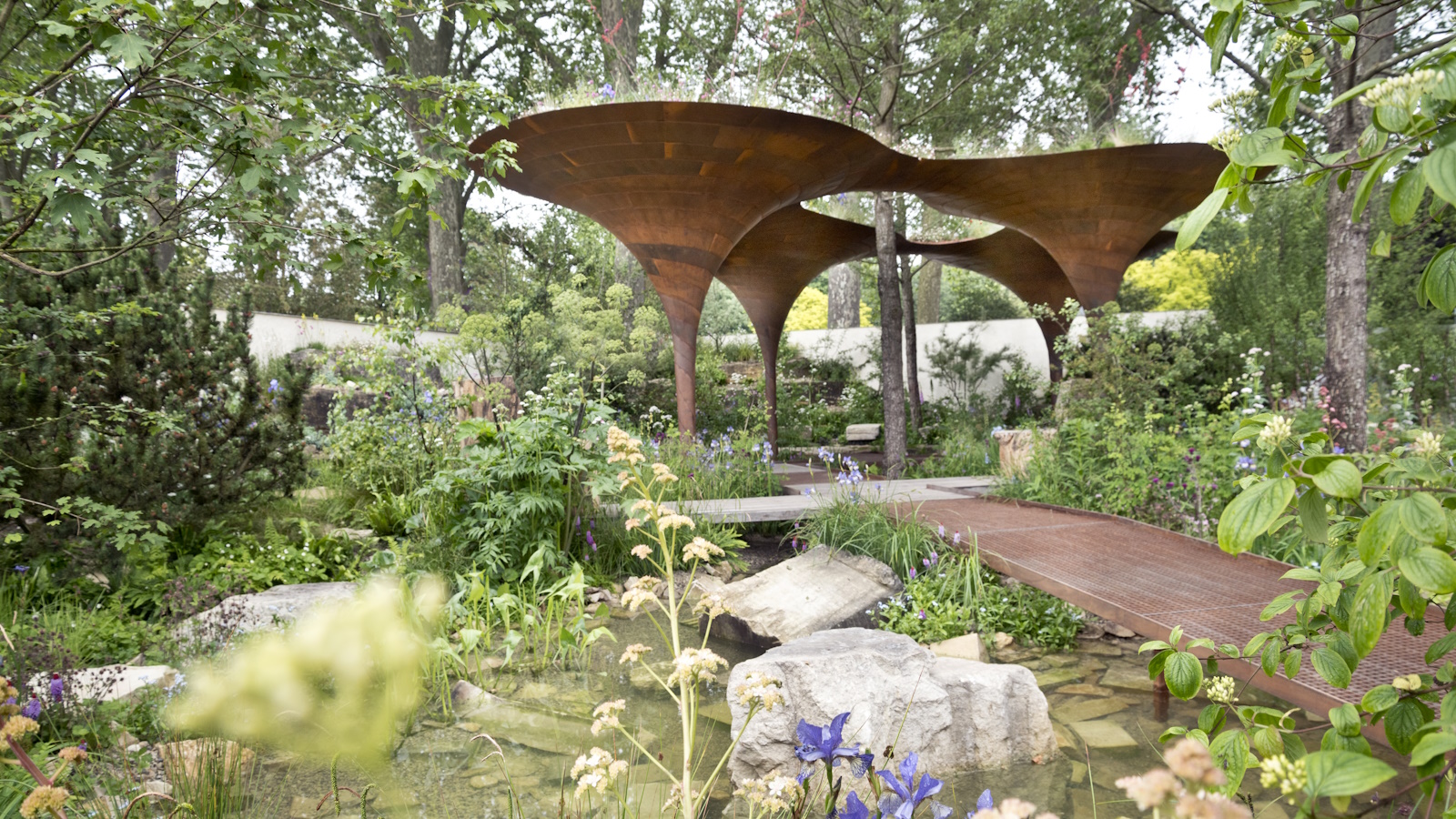
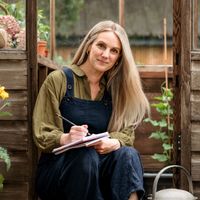
For the many garden and plant lovers among us, there is nothing quite like visiting the RHS Chelsea Flower Show in London for absorbing the very latest in gardening trends and innovations. It is also, of course, breathtakingly beautiful, and every year I come away feeling completely consumed by the new planting combinations and landscaping ideas I’ve seen, eager to recreate them in my own backyard.
An overarching theme at this year’s show was the impact a garden can have on our wellbeing. Whether to help with recovery from or living with an illness, or with mental conditions. The Forest Bathing garden, designed by Ula Maria for sufferers of muscular dystrophy and winner of the 'Best Show Garden' award, is a superb and impressive example of this. It was designed as a place of solace and refuge, inspired by a birch grove and underplanted with woodland shrubs such as Melica altissima ‘Alba’ grass, and Geranium sylvaticum ‘Mayflower’. The garden is a humbling reminder to us all of the restorative and hopeful power that plants and gardens hold.
Unsurprisingly, there was also a big focus on environmental issues and sustainability this year, with flooding and drought informing the design schemes in several key gardens at the show. I talk about this in more detail below, plus highlight several other key trends and planting ideas that I’m certain you will be able to recreate in your own backyard.

The Muscular Dystrophy UK - Forest Bathing Garden, designed by Ula Maria and sponsored by Project Giving Back
5 take-home trends from the 2024 RHS Chelsea Flower Show
With a little planning you can easily recreate these Chelsea trends at home, even in a small outdoor space.
Get creative with water capture ideas
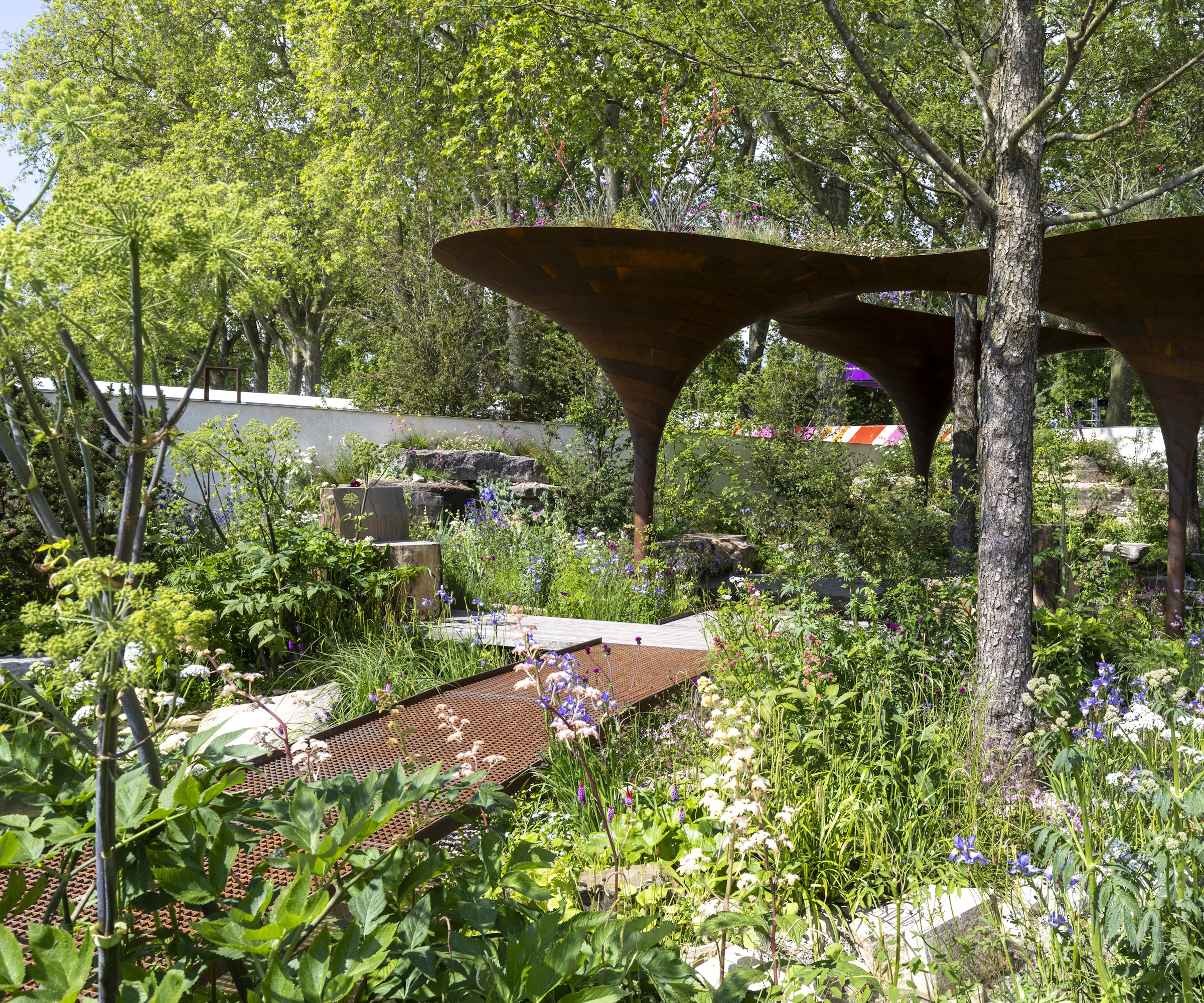
Tom Massey's WaterAid garden explored the challenges presented by an ever-changing climate
With so many of us all over the world experiencing the effects of a changing climate on our gardens, be that excess rainfall or prolonged periods of drought causing damage to plants or crops, it is so important we learn to adapt and make choices that help our gardens work with the climate and not against it.
The WaterAid garden designed by Tom Massey, and sponsored by Project Giving Back, explores this theme. With a focus on sustainable water management, the garden featured a unique rainwater harvesting pavilion, designed to store and filter water so that it can be used in the garden or as a source of drinking water. Its purpose is also to slow the flow of heavy rainfall, and create some shade in a garden. The planting was utterly diverse, ranging from bog plants which are fully submerged in water, to upland areas populated with plants that can survive in much drier conditions.
For many of us, installing a structure such as this in our backyards would be a stretch. However, there are many simple ways you can introduce a rainwater harvesting system in your yard, such as a rain barrel or a rain chain - this elegant rain chain design at Amazon is a top pick. You could also consider planting up a flat roof on a shed or outhouse with plants that can absorb a lot of moisture, to slow the flow of heavy rain.
Design expertise in your inbox – from inspiring decorating ideas and beautiful celebrity homes to practical gardening advice and shopping round-ups.
Likewise, in the flood-resilient garden, created by garden designers Naomi Slade and Dr. Ed Barsley, we saw plenty more ideas on how to slow the flow of excess rainwater using large water capture tanks, and by the strategic planting of trees and shrubs, which help to absorb heavy rainfall.
Add large foliage plants and moss to elevate your landscaping

The MOROTO no IE sanctuary garden, designed by Kazuyuki Ishihara, provided a masterclass in moss
In many of the RHS Chelsea gardens this year, from large show gardens to small balconies and container spaces, bold foliage was used to great effect. Large, dramatic foliage plants can add impact to any garden, perhaps even more so than flowering plants.
‘The Ecotherapy Garden, designed by Tom Bannister, was a great example of this, using plants such as Fatsia polycarpa 'Green Fingers', Rodgersia pinnata and Hosta Blue 'Mouse Ears' to add interest and character to the small container garden,’ says Thomas Rutter, gardener and content editor at H&G.
‘Large foliage planting, while adding texture and form to any design, can also add a tropical twist and unique leaves can be transformative, evoking images of rainforest-like environments.’
You can see a wide range of textured hosta plants at Fast Growing Trees.
The use of moss as a groundcover plant was seen in several gardens, exemplified in the MOROTO no IE sanctuary garden, designed by Kazuyuki Ishihara. ‘Moss is used in the garden to soften hard landscaping elements, helping to add greenery to stonework and rockery features,’ continues Thomas. ‘In mild, humid environments, moss will survive through the winter months, providing year-round interest.’

Thomas is a Content Editor within the Gardens Team at Homes & Gardens. He has been working as a gardener and garden writer for several years. Whilst completing his Horticultural Traineeship at the Garden Museum, London, he was able to gain experience at many of the UK's world-famous gardens, including Sissinghurst, Lowther Castle, and Iford Manor. Following this, he worked for two private estates in Tuscany, Italy.
Create elegant, hidden dining spaces
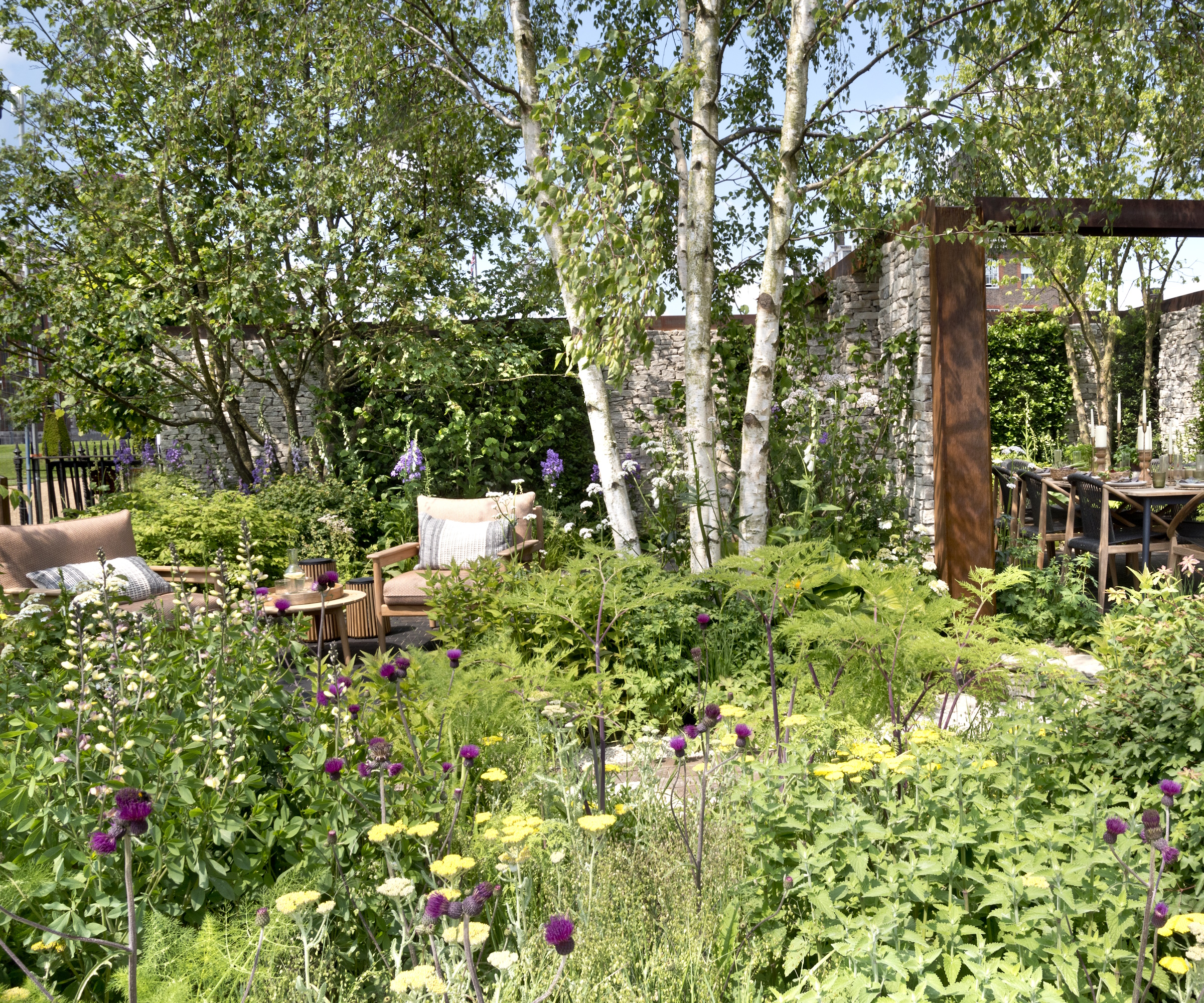
The Money Doesn't Grow On Trees Garden was designed as a haven in which to de-stress
One element of the show that inspired me immensely was seeing so many beautiful dining tables set up in glasshouses, or nestled in gorgeous enclaves in gardens, surrounded by soft, textured planting and delicious scents from climbing plants.
Setting up a dining table in my greenhouse, and adorning the inside with festoon lighting is now something I really want to try, albeit temporarily, as mine wouldn't accommodate a table on a permanent basis.
Another option, exemplified wonderfully in the Money Doesn’t Grow On Trees Garden, designed by Baz Grainger and built by Landform Consultants, would be to design a pergola structure and train climbers or shrub roses up its sides. In a few years, you can create a canopy of greenery and blooms under which to dine. Surely this would be the perfect spot for summer evenings.
The garden was a haven of naturalistic and scented planting and was designed as a place to relax and unwind. It had several seating areas surrounded by textured, feathery planting to create a calming sanctuary in which to de-stress. Key plants included purple-flowering mint, apricot foxgloves, wild garlic and tall, frothy achillea - you can find a very similar variety of sunny yellow achillea at Nature Hills.
Get innovative with height on a balcony using tropical planting
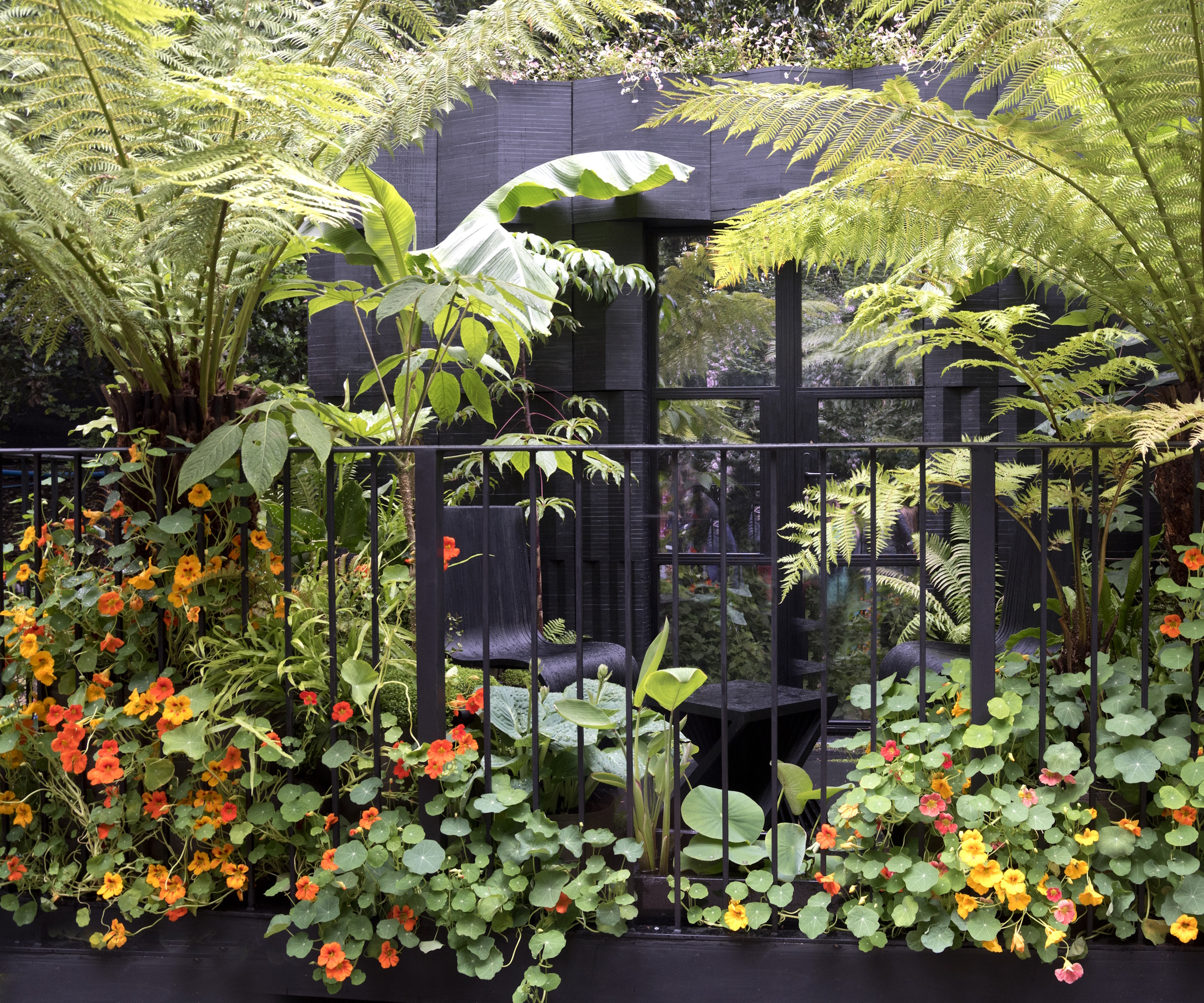
The Junglette Garden inspired us with its statuesque tree ferns
There is no need to feel restricted if you have a smaller outdoor space, as the Addleshaw Goddard Junglette Garden proved at this year's show. The designers, Mike McMahon & Jewlsy Mathews, created a space to inspire city dwellers.
My two key takeouts from this balcony garden were the enormous tree ferns, such as this Australian tree fern from Nature Hills, showing that you can get clever and be bold with height on a terrace or balcony to magnificent effect. The result is a sense of privacy and shelter, and a connection to the natural world in the middle of an urban center.
The other feature I loved about this balcony garden was its biodiversity, showing us all that a small space can still attract wildlife and pollinators, and combine a diverse range of plants. There were bird nests, a tiny pond and even bat boxes, such as these from Amazon, integrated into the garden design, all of which was hugely inspiring.
Add calming palettes and tangerines to your borders and pots
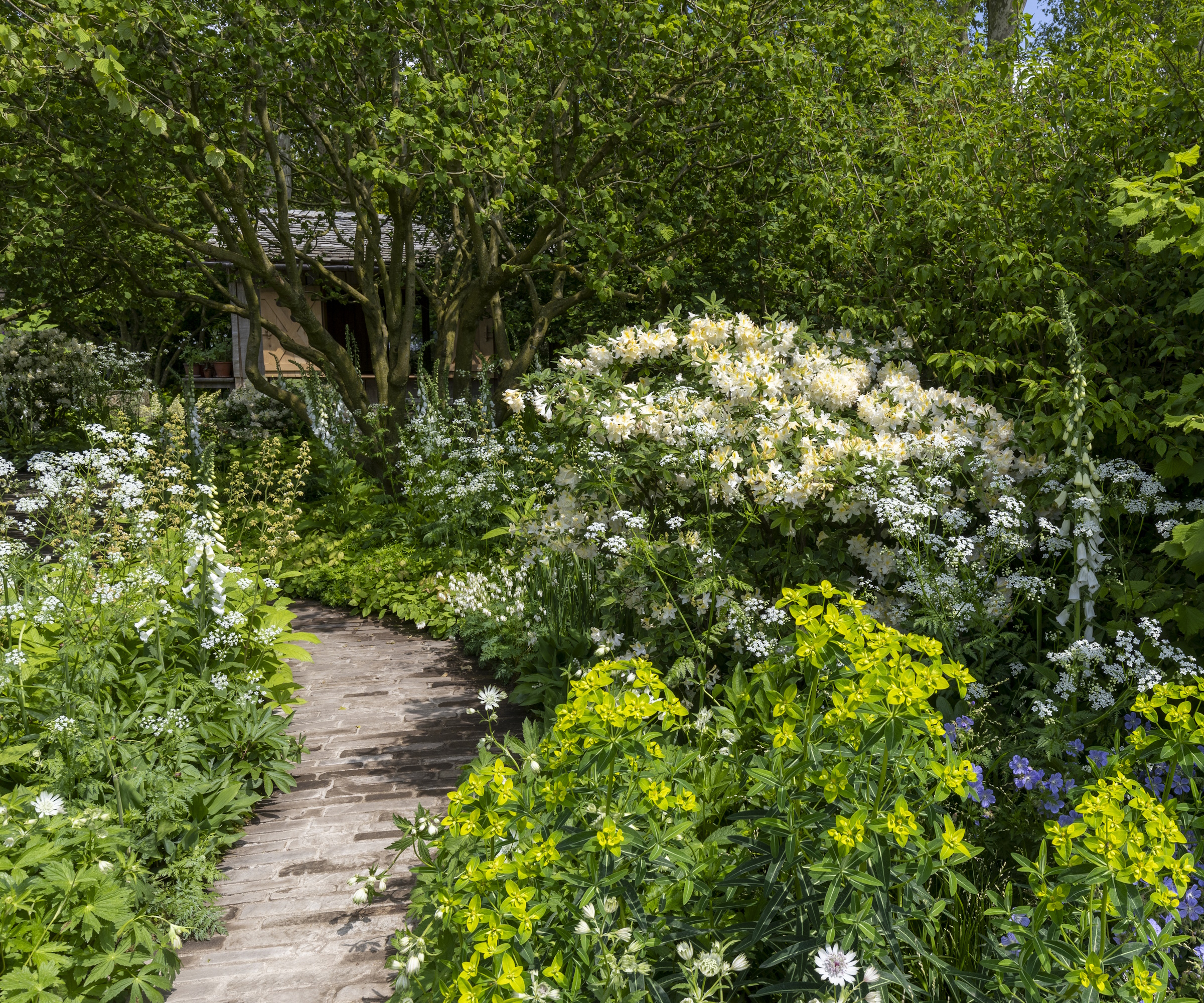
The National Garden Scheme Garden featured woodland planting in calming colors
In every garden at Chelsea, I am always on the look out for color planting trends, and new combinations I might not have considered before. This year I saw calming shades in abundance, from minimalist palettes of whites, creams and greens, to cool tones of pale cornflower blue, lemon, lilac and blush.
A stunning example of this was in the The National Garden Scheme Garden, designed by Tom Stuart-Smith, which featured a mix of woodland plants, including foxgloves, trollius, dicentra, Astrantia major 'Star of Billion', and Thalictrum delavayi 'Splendide White'.
A brighter color palette that sparked my imagination was tangerine, peach and orange. These warmer tones added depth and richness to many planting schemes, and would be so simple to recreate in your own backyard.
Featured flowers included Geum ‘Pretticoats Peach’, Trollius chinensis ‘Golden Queen’, and Achillea millefolium ‘Terracotta’. Pair with pale blue grasses or irises for a striking combination with a Mediterranean feel. You can shop the vibrant range of Geum varieties at Nature Hills.
For more Chelsea Flower Show design trends and inspiration, check out our report on The Bridgerton Garden, and discover how its clever planting reflects one of the show's key characters.

Rachel is a gardening editor, floral designer, flower grower and gardener. Her journalism career began on Country Living magazine, sparking a love of container gardening and wild planting. After several years as editor of floral art magazine The Flower Arranger, Rachel became a floral designer and stylist, before joining Homes & Gardens in 2023. She writes and presents the brand's weekly gardening and floristry social series Petals & Roots. An expert in cut flowers, she is particularly interested in sustainable gardening methods and growing flowers and herbs for wellbeing. Last summer, she was invited to Singapore to learn about the nation state's ambitious plan to create a city in nature, discovering a world of tropical planting and visionary urban horticulture.